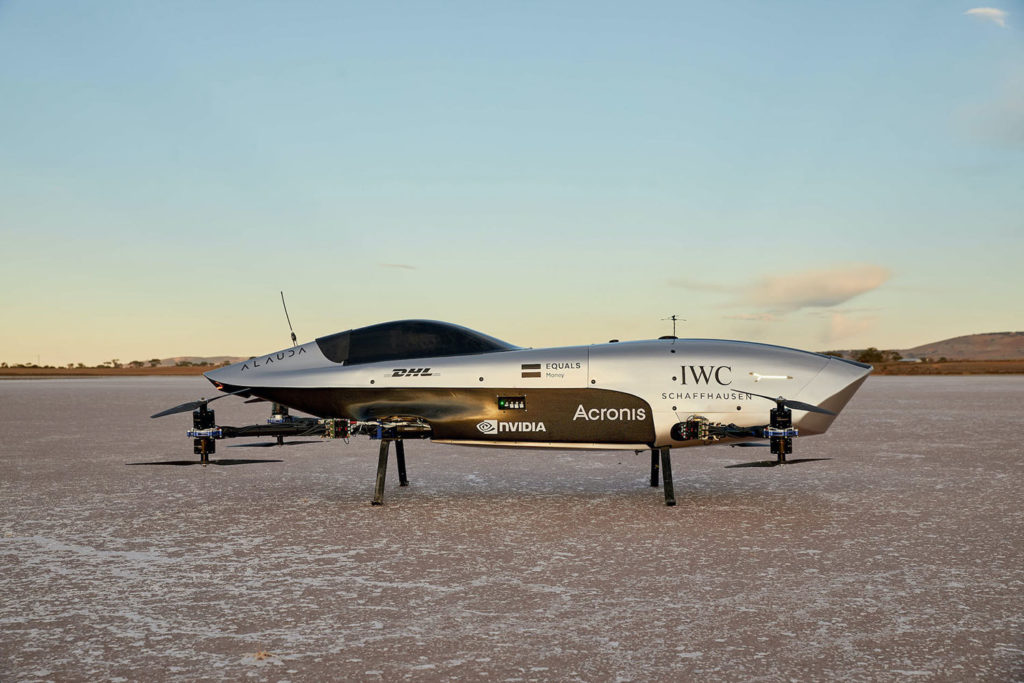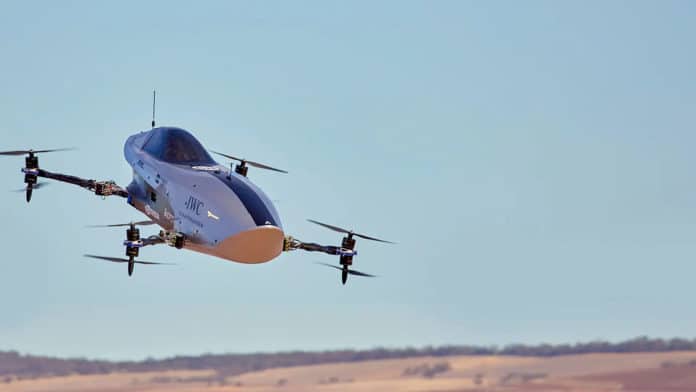The startup Alauda Aeronautics has announced the historic first flights of its full-scale electric flying racing car, the remotely-piloted Alauda Mk3. These first flights could mean the gateway to an entirely new type of racing league.
The Airspeeder Mk3 was unveiled by the Australian startup in February this year as the world’s first full-size electric flying race car that works like a drone. Now the Mk3 has taken off for the first time at an undisclosed test location in the deserts of South Australia under the observation of Australia’s Civil Aviation Safety Authority (CASA).
The successful execution of these flights means that uncrewed electric flying car Grand Prixs will take place in 2021 at three soon-to-be-revealed international locations. By creating the world’s first racing series for electric flying cars, Alauda Aeronautics takes a leadership position in this generation’s defining mobility revolution. The company is planning for a crewed showcase as early as 2022.

The upcoming EXA Grand Prixis Airspeeder’s first racing series. Up to four teams with two remote pilots per team will compete in three individual events across the globe through 2021. They will race ‘blade-to-blade over locations inaccessible to traditional motorsport.
“EXA delivers on the promise of a future first shown in science fiction. We are proud to introduce a sport that redefines what humans and machines can achieve together. These historic first flights are just the start, and we are all excited to begin a momentous new chapter in motorsport’s rich legacy,” said Airspeeder and Alauda founder Matt Pearson.
The flying racers won’t have a pilot sitting in the cockpit – the aircraft will be remotely piloted by skilled women and men. They take a seat in a simulator environment that mimics the dynamics and ergonomics of the Mk3 cockpit environment for the Grand Prix races.
The Airspeeder Mk3 octocopter delivers 320 kW at maximum power, can reach top speeds of 124 miles per hour (200 km/h), and accelerate from 0 to 100 km/h (0-62 mph) in just 2.8 seconds. This carbon-fiber-bodied Mk3 weighs in at 130 kg and is capable of lifting more than 80 kg – average weight for a human pilot. There is no information about the modular batteries at this point.
Alauda’s engineers have developed an innovative’ slide and lock’ system for the swift removal and replacement of batteries when on the ground. Intense internal competition between in-house pit-crews has driven the pitstop time down to just 20 seconds, which is entirely comparable with any form of ground-based legacy motorsport.
Physical telerobotic avatars named ‘The Aviators’ sit within the cockpit environment of the Mk3 to provide engineers with critical data and information on the effects of high-speed racing, rapid turning, acceleration, and deceleration on the human frame. This will accelerate Airspeeder’s progression to human-piloted races, which are scheduled in 2022. The sensors in the Alauda Mk3 include LiDAR, radar, and a special collision avoidance system that ensure close but safe racing.
